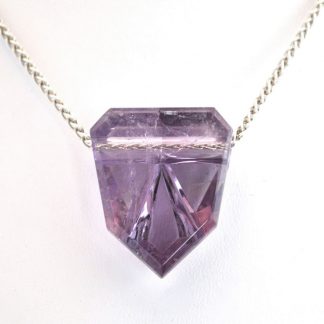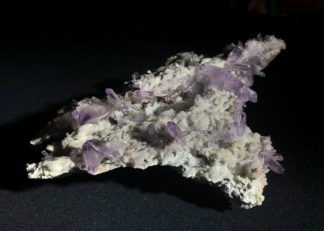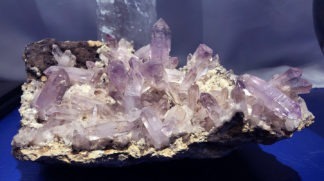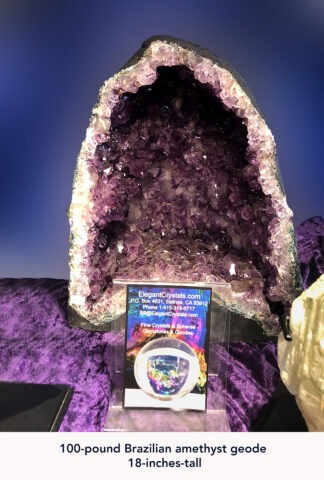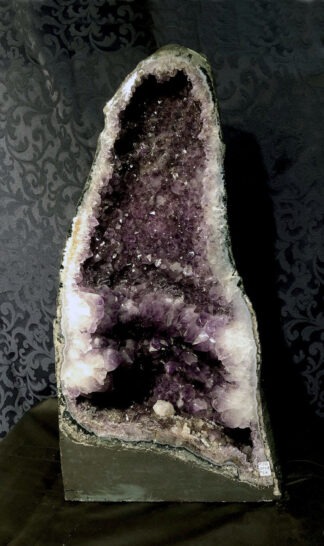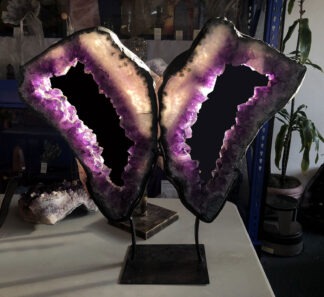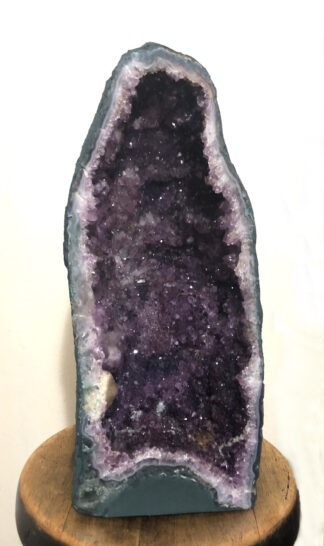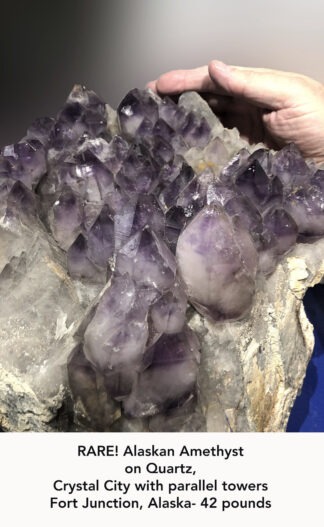The amethyst color (indigo/ violet/ purple) represents the vibration of the pineal gland (third eye chakra- indigo and purple) and pituitary gland (crown chakra – lilac, gold and white). Keep an amethyst near your chakras to promote a meditative state. In Feng Shui, amethyst represents wealth. Amethyst is usually found in Brazil, as small rounded caves from 6 inches across up to 8 feet long or more. Occasionally, the shape forms long tubes, called vugs, of varying width, up to 45 feet long!
The color can range from purple-white to almost black. Also, the perception of color depends on the light source strength and color tint. In the sun, amethyst may be a vivid purple, only to look dark or black indoors under dim lighting. Outside, the sun brings out the blue tint, while under halogen bulbs, the color is warmer and more reddish from the yellow tint of the light-bulb. You can use a small spotlight to highlight the amethyst in your room or gallery. Be aware that sunlight can cause some amethyst to fade. This is usually a slow process.
If your amethyst crystal has a rich dark color, it is best to keep it indoors, away from a sunny window. If you want to use it outdoors, face it north, away from direct sunlight, or put it in the shade. Most amethyst geodes come from Brazil. Amethyst is also found in large pieces and geodes (sealed caves) in Uruguay. Other mining locations include Madagascar, India, the USA (New Mexico, Arizona, Montana, Missouri, California, Georgia), Mexico, Namibia, South Africa, and Canada. Amethyst usually expresses as alternating color layers or zones where light and dark purple shades interweave with clear zones.
When yellow, orange or gold color layers appear in amethyst, it is called ametrine (amethyst-citrine.) Amethyst can loose its color when exposed to heat, at which point it can wind up white, yellow, orange, or brown. This is called “heat-treated citrine” to distinguish it from natural color citrine. Occasionally, the heat treatment of amethyst can result in green quartz crystals! Even the heat from a campfire can cause nearby crystals in the ground to turn green, as happened in Mexico once.
